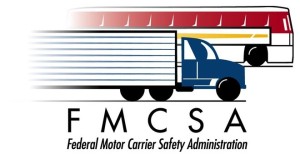HISTORY OF TRUCKING INSURANCE REGULATION
When trucking deregulation was enacted in 1980, barriers to entry into the industry were virtually eliminated, but insurance requirements have not been adjusted since then. Congress believed, as expressed in the legislative language, that financial responsibility requirements were needed to protect the public from undercapitalized or inexperienced carriers who might not be willing or able to pay the damages from crashes they caused. The primary instrument of financial responsibility is the requirement to carry liability insurance at a level of $750,000 per occurrence for general freight carriers and higher amounts for hazardous materials (HM) and passenger carriers.
The underlying problems to be addressed are how to provide compensation for victims of CMV-at-fault crashes whose costs to the victims exceed mandatory insurance limits that the carrier is unwilling or unable to exceed, and how to reform or remove carriers from service due to detrimental safety behavior, before they have a serious crash.
Three distinct groups of carriers—with two divided into subgroups—are covered by Federal insurance liability laws, not all of which are engaged in interstate or for-hire transportation. The vast majority of the regulated carriers are general freight carriers in interstate for-hire service, and these carriers have the lowest requirement for liability coverage. HM carriers are regulated whether for-hire or private, interstate or intrastate, and passenger carriers are regulated if they are for-hire.
Trucking is a low profit margin business, and profitability can depend upon small cost savings. There are two broad categories of carriers: small/medium size carriers with little equity, and large carriers that are self-insured and relatively safe. Smaller carriers seem to be especially sensitive to operating costs, including insurance and fuel. The motor carrier industry as a whole can be roughly divided into two groups. The upper tier carriers are and will likely be little affected by financial responsibility requirements and rarely engage in cost exporting.
The lower tier carriers, in contrast, may not necessarily internalize safety costs and may need to be constrained through financial responsibility requirements. Studies have shown that safety measures and outcomes are correlated with the net worth of the carrier.
Insurance rates are set based on the expected crash cost: crash frequency multiplied by crash cost. An insurance premium is simply the insurance rate multiplied by the number of power units. When a person or firm purchases insurance, it is effectively paying to join a risk pool to spread the cost of an adverse event over a larger base than just the assets of the individual or firm. The risk has an expected value, which is the probability of an adverse event times the cost of the event.
FMCSA Update: ELD Information for Big Rig Truckers
Read more at cite* https://www.fmcsa.dot.gov/sites/fmcsa.dot.gov/files/docs/Financial-Responsibility-Study.pdf
